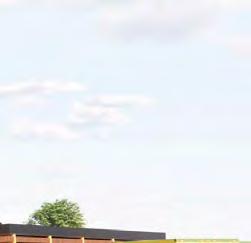





















EDITOR
Nicole Vulcan
Yoda and Obi’s Mom
LAYOUT DESIGN
Jennifer Galler
Huey’s Mom
AD DESIGN
Nathan Elston
Elsa’s Dad
ADVERTISING
Ashley Sarvis
Tucker and Mikko’s Mom


ADVERTISING
Ban Tat
Gracie’s Dad
ADVERTISING
Trinity Bradle
Sadie’s Mom
Jack Harvel

Truman’s Dad
Allie Noland
Remi’s Mom
Richard Sitts
Hicoo’s Dad
Aaron Switzer
Kashi’s Dad
Angela Switzer
Chocolate’s Mom

Inside this edition of Central Oregon Pets, you’ll find plenty of evidence of the good life. In our story on catios on page 29, we chat with a local couple who spends their entire working life ensuring cats have a sunny place to relax outdoors. In our annual Central Oregon cutest pets contest featured on page 5, dogs and cats and other local animals display their most charming selves. And in our “Bark and Bougie” story on page 20, see how local dogs live the high life on the trails and in hotels designed just for them. That’s just some of the stories you’ll find inside this issue.
It’s our great pleasure to bring you yet another edition, covering one of our favorite topics: Central Oregon Pets!


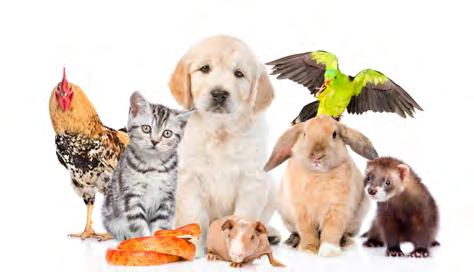
It’s not just humans who live the good life in Central Oregon! The pets of the region like to have a good time, too.























It is not an understatement to say that running this Cutest Pet photo contest is one of the joys our staff looks forward to all year. This year, Central Oregon Pets launched a new online platform allowing readers to vote for their favorites. We got over 800 entries from over 400 pet parents; then, over 2,500 people voted for their favorites. In the following pages, see the photos of all the winners. Each winner earns a free print from High Desert Frameworks, and one lucky entrant also gets a hand-stamped tag from Metalheads Boutique.
Thanks to all who entered — in our minds, all the pets of Central Oregon are the cutest!















Best Puppy Eyes


Most Photogenic
Best Smile

































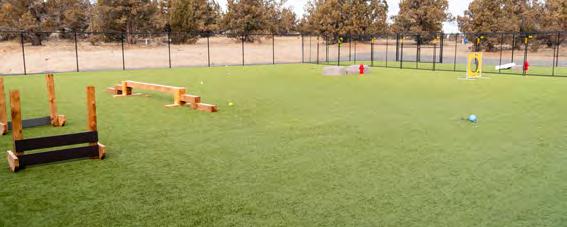
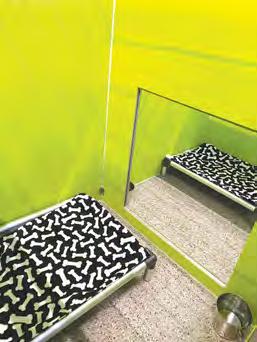

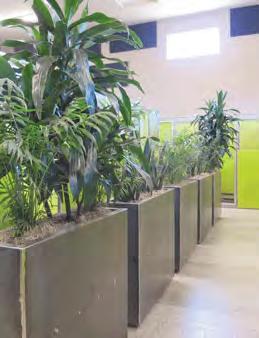







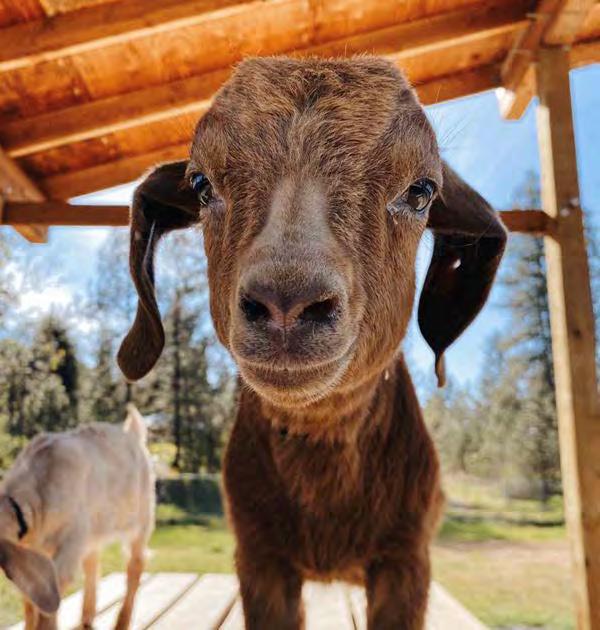































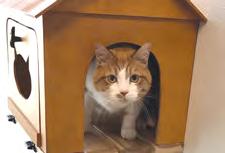




 By Nicole Vulcan
By Nicole Vulcan
Anyone who’s ever tried to take a photo of a pet knows that it can be a task requiring plenty of patience. Pets wiggle a lot, and they don’t always follow directions without some extra encouragement (i.e., treats).
Local photographer Megan Baker, who specializes in fami ly portraits and specialty photography under the name MB Photography, knows a little about this topic, seeing as how a good portion of family portraits in Central Oregon also involve the family pet. Baker’s “pet cred” runs a little deeper, since she also runs the custom pettag business, Metalheads Boutique.
In homage to our latest Central Oregon Pets photo contest, I had a recent chat with Baker about her tips for taking great pet photos.


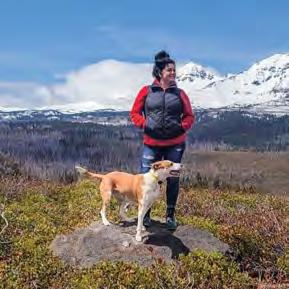
Central Oregon Pets: What are some of the challenges with photographing pets?
Megan Baker: Having expectations is probably the hardest part about taking photos of animals, or similarly, children, because they’re distracted, they’re not looking at you. So a lot of the times you need to have something that’s giving them incentive to look your way or seem happy if they’re not. I have a bag of tricks – I have noisemakers, I have treats, and sometimes I have their parents stand behind me. And it really is similar to taking pictures of children! You have to plan for the worst-case scenario.
COP: What are some general tips for taking a good photo of a dog?
MB: Always choose a neutral background. You don’t want to take this beautiful photo and then have chaos in
the background. Make sure they’re looking at you — I use treats. I have a little squeaky toy that I keep in my pocket. Sitting is usually best.
COP: What do you do when you have a pet that never settles down?
MB: Then we try for a running photo! If we can, I’ll have one owner with me so I’m not just trying to do it by myself — which is a large part to do with why I don’t have a lot of pictures of my own dog, right? If they’re sitting with their owner and then they can release them and they run towards me and I have a treat, you can get that action photo that way. Sometimes dogs just don’t like to sit still.
COP: Do you think it’s possible to take that good action shot with just a standard phone camera?
MB: Phones have come a long way. In fact — I don’t want to get off on a tangent here — but if you look at the metadata for your phone photo, it often shows the ISO and shutter speed and it’s pretty on par, if it’s on auto – it’s pretty good at detecting the scene.
Here’s another tip: If you’re trying to get a photo of your pet, don’t use portrait mode unless they’re [the pet] really good at sitting still.
—Find MB Photography on Instagram @mbphotographybend and Metalheads Boutique @metalheadsboutique.





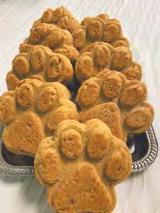
 By Allie Noland
By Allie Noland
Whether you have a chill, laidback pug or a springy, high-energy Labrador retriever, the Alpenglow Park dog area has a safe space for your pup to have some time off leash. The park opened in June 2022 and so far, pets approve.
When designing the 37-acre Alpenglow Park in southeast Bend, Bend Park and Recreation District reached out to the community through a public outreach process to find out what Central Oregon wanted from the project.
“Unsurprisingly, a fenced-in dog offleash area was a high priority for a lot of folks,” said Ian Isaacson, BPRD project manager for Alpenglow Community Park Project.
Isaacson led the project planning and designed the dog park, splitting it into two sections—3.4 acres for the larger dog area and .5 acre for the small dog area. Some of the feedback from the public suggested looking into installing an agility course.
BPRD wanted to take advantage of the opportunity to provide that experience and equipment for dogs and their owners, Isaacson told Central Oregon Pets.



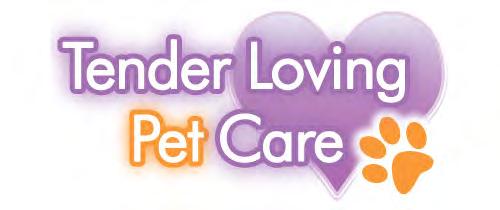


At Alpenglow, pets and owners can utilize hoop jumps, dog walks, doggie crawl tunnels, stepping paws and more. The agility equipment came from BarkPark, a company that makes durable dog park obstacles.

In the large dog area, the space has a variety of features—an open dirt and grass area for fetching, a lengthy agility course for training, trees for sniffing and picnic tables for owners. Small dogs can also weave through poles and run through tunnels with its smaller-scale agility obstacles. The .5-acre area is designated for dogs less than 15 inches at the shoulder and under 25 pounds.
“The public does play a major role in shaping how our parks are designed, and the agility course is the perfect example of that,” Isaacson said. “That wasn’t on our radar until it was brought up during the public outreach process.”
BPRD dog parks are the only public spaces within the city limits where dogs can be off leash legally, according to Isaacson.
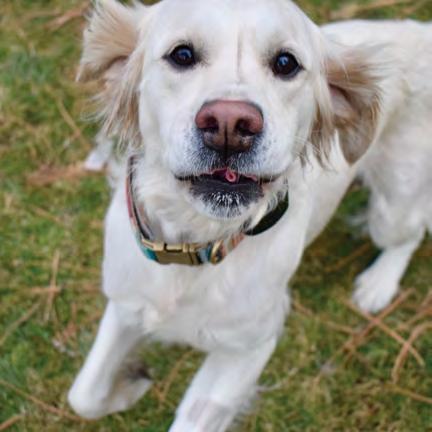
In addition to the off-leash dog park, Alpenglow offers an open lawn area, bouldering area, seasonal spray ground, event pavilion, public picnic tables, accessible trails, a children’s playground and multi-use pathways.
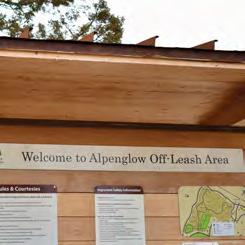
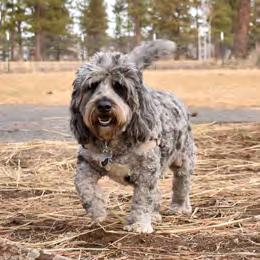

61049 SE 15th St., Bend
bendparksandrec.org/project/alpenglow-community-park

Flying from treetop to treetop through canyons in the Central Oregon high desert, you can find Sasquatch, the red-tailed hawk, spreading her wings and hunting cotton-tailed rabbits with her falconer, Jim Webber. Dating back to 4,000+ years ago, the ancient sport of falconry is defined as the hunting of wild game in its native habitat using a trained raptor, such as a falcon, hawk, owl or eagle. The relationship between falconer and bird is about mutualism and commensalism — defined in the Oxford Dictionary as “an association between two organisms in which one benefits and the other derives neither benefit nor harm,” according to Webber, president of the Oregon Falconers Association. These birds are far from pets.
Webber has been the president of the OFA since 2019. Over the course of his 28 years of sport, he has trained dozens of predatory birds, typically red-tailed hawks, and released them back into their native habitats with hunting skills, increasing lifespan and success in the wild.

“When I capture a young hawk, it doesn’t know, but it’s just won the lottery,” Webber said. “Because it’s getting food. It’s getting shelter. It’s getting medical attention as needed. And it’s also getting its career. It’s getting experience hunting larger things than just bowls of mice. Because during the winter when the bowls of mice disappear, they’ve got to go after rabbits and squirrels.”
Around 70% of raptor chicks will die during their first winter due to starvation, disease and other environmental factors, Webber told Central Oregon Pets. Falconers are only allowed to take first-year raptors from the wild, because birds older than a year have passed the test of time and are a part of the strong gene pool.
Falconry is a heavily regulated sport for protection of the ecosystem. Completing the apprenticeship takes at least two years. Becoming a master falconer takes at least seven years. Just becoming an apprentice takes ample time, money, education, experience and dedication.
Apprentices must find a general or master falconer to sponsor them, study for and pass a 100- question exam, create a hawk house, or
cont. on pg. 19

We are the only locally privately owned facility in Deschutes county
Pet cremation with compassion and peace of mind in the heart of Bend




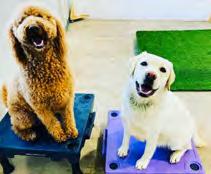

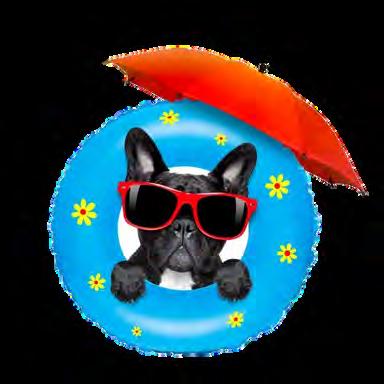
mew, meeting federal specifications, pass an Oregon Department of Fish and Wildlife equipment inspection and complete their hunting license and raptor capture authorization from ODFW. After all that, falconers serve a two-year apprenticeship before going on a solo hunt as a general falconer. Then, it’s another five years to become a master falconer.
Before a falconer starts training a hawk, they must capture it out of the wild. A common method is using a Bal-Chatri trap. Small game is put into the wire mesh boxlike part of the trap. Dozens of mono-filament line nooses cover the top. Designed to trap talons without harm, the birds dive upon the live quarry and get its talons caught in the nooses. Then the falconer approaches the trap to release the bird. If the bird is suitable for falconry, they are put into a hawk box and are taken to its new mew, and if not, they are released back into the wild. Once the hawk is safely in its new hawk house, training shortly follows with food, glove and lure techniques. Webber typically trains hawks for seven months, capturing in the fall, training in the winter and releasing in the spring.
Right now, Webber is training and working with Sasquatch, taking her out for hunts around five times a week. This female bird has some of the biggest talons Webber’s ever seen, so the name seemed fitting. Though the relationship is seen as a partnership and is pretty much all about food, Webber said he holds a special love, respect and appreciation for the birds he works with.
ber can hear where she is flying without having to constantly keep an eye on her during the hunt. On the other, is a leather Aylmeri anklet. The anklet is like a collar, and the jess is like a leash. The jess is a leather piece that tethers the falcon to the gauntlet, or falconry glove, between hunts.
After Webber puts on his glove, every-
“After a while, they recognize that I’m their bird dog,” Webber said.
As Webber and his Brittany hunting dog, Rue, walk through the canyon trying to scare the wild quarry on the ground, Sasquatch follows while searching the ground for a diving opportunity. Once she sees some scurrying game, Sasquatch flies down and kills with her talons. If the attempt is successful, Webber approaches the bird, swaps out the rabbit for a “lure,” a small object with meat tied around it, and puts the rabbit in his bag. After Sasquatch has eaten the offering, it’s back to hunting.
Webber invites Sasquatch to perch on his glove with a whistle between attempts. The hawk’s immediate responsiveness to Webber’s queues is fueled by trust. If she sticks with him, she receives care, gets food and gets to learn even more. In the spring, Webber plans to release Sasquatch back to the wild with strong hunting skills and take on a new bird in the fall.
“[Every bird] is different,” Webber said. “Some birds are great and calm on the glove, others are just crazy. So you just have to adapt and adapt your training program for the personality of the bird.”
Sasquatch and Webber work as a team on hunting outings, which requires specific equipment. It all starts when the hawk comes out of its hawk box. On one of her ankles, a little bell is tied on, so Web -
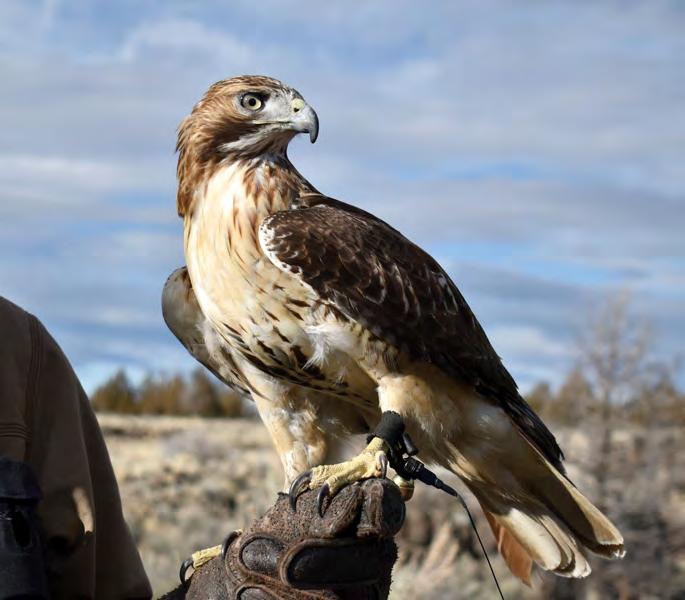
thing is one-handed from there. He takes Sasquatch out of the box, invites her to perch on his glove, ties on the jess, fits a tiny tracking ankle piece around her ankle and sets out to the canyon. Webber untethers her when he’s ready, inviting her to find her perch in a nearby tree. One might think that the bird would fly away once it’s free to fly, but it stays close. With a simple whistle, Sasquatch returns back to the glove.
“Falconry does not include the keeping of birds of prey as pets or prestige items, for captive-breeding purposes, for rehabilitation or education purposes, for shows, renaissance fairs and the like, or for purely scientific purposes. The justification for falconers to possess raptorial birds is the sportsmanlike pursuit of wild quarry,” states the North American Falconers Association Ethics Policy.
“When I capture a young hawk, it doesn’t know, but it’s just won the lottery... Because it’s getting food. It’s getting shelter. It’s getting medical attention as needed. And it’s also getting its career.”
—Jim WebberAllie Noland
Man’s best friend split away from wolves about 30,000 years ago, opting for cuteness and obedience rather than ruthless pack hunting. And though our floppy-eared buddies are technically still the same species as wolves, they live much different lives. While wolves track large animals across an unforgiving landscape, Fido is begging for scraps under the kitchen table — and we love them for it.
People want what’s best for their pets, and it’s showing in the market. The amount of money Americans spent in the pet industry doubled between 2011 and 2021. People feed their dogs vitamins and supplements, “raw food” diets with human-grade meats and produce is more popular than kittle and pet insurance is a multibillion-dollar industry. Dogs’ lives are getting more and more luxurious, so we talked with businesses that cater to these pampered wolves.


Dogs live more like kings than wolves, and more luxury services are emerging for our four-legged friendsDogs Gone Wild takes dogs into nature for a two-hour outdoor experience that will tucker them out and boost their confidence. Courtesy Dogs Gone Wild
Bend Unleashed is a high-end hotel for dogs. Unlike the loud and claustrophobic kennels of old, it offers all-day play for its pupstomers. Animals are individually assessed before booking to make sure they’re put in the most appropriate rooms and plays well with others.

“Our philosophy is very different. Most conventional kennels have the dogs stay inside their room most of the day. Some places even only allow the dogs out for 15 minutes in the morning and 15 minutes at night, unless you want to pay extra and to us that’s just absurd,” said Tiffany Farrell, managing partner of Bend Unleashed. “What we do is we have a place for every dog, whether they can be in group play or not, where they have access throughout the day, from 7 in the morning until 9 at night, outside whether it’s in their own private play yard, or whether it’s in their supervised group play yard.”
Ferrell started the business four years ago after struggling to find a kennel that could accommodate her high-energy bird dogs. During their stays, dogs spend most of the day playing, or for additional charges going on private walks, getting indi-

vidual sessions with a human or getting professionally groomed.
“We’re just so fortunate with the quality of care that we can offer because of our staff which makes our facility even more exceptional,” Ferrell said. “We do have an on-site certified groomer. We have certified trainers, we have that tech assistant, we have a lot of experience.”
dog’s a happy dog, and they’re much better behaved that way,” Roy said. “A lot of the dogs are young, need confidence and they have tons of energy. So, I walk up buttes or rock formations, all kinds of different obstacles to not just get them into shape but get that confidence up.”
Dogs Gone Wild has an adventure camp for young athletic
“Playing is the fun part, but that’s a very small percentage of what we do. Our employees work their tushes off, our place is spotless, from floor to ceiling,” Ferrell said. “We do room service every single day in all of our dogs’ rooms. It doesn’t matter if they’re there for a day or if they’re there for a month, every day their room is cleaned. We
Just like Bend Unleashed is a cut above other kennels, Dogs Gone Wild goes above and beyond what’s expected of a dog walker. Rather than a stroll around the block, Charlotte Roy takes dogs on outdoor adventures. Ten years ago, Roy began taking her Border Collie for long walks outside. Friends asked if their dogs could tag along, and before long people were offering her money to look after their dogs for a couple hours.
“My mission is to get the dogs tired, because I think a tired
breeds, a slower-paced camp for older dogs, a solo camp for solitary dogs and even overnight camps. Roy says dogs in her care benefit from reduced anxiety, better socialization with other dogs and are in better physical shape.
“It’s great benefits for socializations, it’s more than dog park, which is more like a wild card with what kind of dogs you find. It’s always the same pack,” Roy said.
These jobs may seem like it’s all fun and games, but there’s more to it than that. Bend Unleashed works tirelessly before, during and after its play sessions.
sanitize every single bowl and water pail after each feeding; it’s just it’s a lot of work.”
Dogs Gone Wild’s outdoor adventures is no walk in the park either — well, not just a walk in the park. Roy must keep a pack of 10 off-leash dogs out of trouble in large open environments.
“It’s not just hanging out with dogs, it’s managing a pack of dogs,” Roy said. “I have to be in charge. If I’m distracted, they’ll immediately notice and then get into things that they shouldn’t.”
“Playing is the fun part, but that’s a very small percentage of what we do. Our employees work their tushes off, our place is spotless, from floor to ceiling.”
—Tiffany FerrellCourtesy Bend Unleashed Courtesy Bend Unleashed

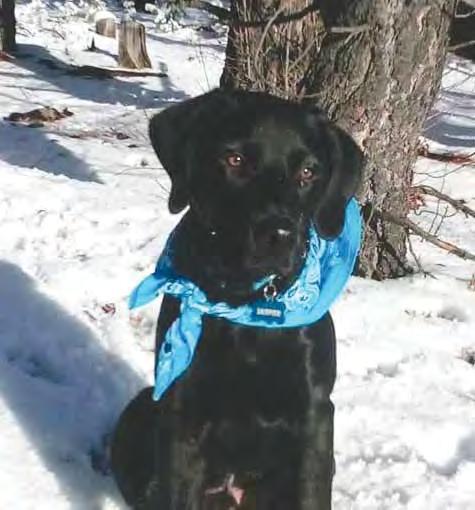

If it takes a village to raise a child, how big a pack does it take to raise a guide dog for the blind?
Guide Dogs for the Blind is a nonprofit organization with headquarters in San Rafael, California and a 50-acre campus in Boring, Oregon, which opened in 1995. GDB is the largest guide dog school in North America and has been raising and training guide dogs since 1942. Its mission is to “…empower lives by creating exceptional partnerships between people, dogs and communities.”
“At Guide Dogs for the Blind, we believe that everyone deserves to move through the world safely and confidently—to live the life they want to live,” said Cheryl Vincent, Boring campus director of training.
So what does it take to become a guide dog for the blind?

When the puppies (yellow and black Labrador Retrievers, Golden Retrievers, or Lab/Golden crosses) are about 8-10 weeks old, the “Puppy Truck” picks them
up from the San Rafael breeding facility for delivery to various locations across 10 Western states to meet their puppy raisers. Approximately 3,000 volunteers participate in the puppy-raising phase which also complements many 4-H, Future Farmers of America, or other programs.
“Our primary job as puppy raisers is to teach basic obedience and give the puppies a solid foundation of socializing, which looks different in every household,” said Megan Minkiewicz, volunteer puppy raiser in Powell Butte. Puppies are raised individually in families with or without kids, by working or retired adults, in neighborhoods or rural areas, or split between two families. ”It’s a great way to meet everybody’s schedule and to give the dogs a lot of varied exposure,” said Minkiewicz, who is raising her 17th puppy, Brian.
In addition to the puppy raisers, local puppy clubs help train and support the raisers. Minkiewicz estimated that there are 10 to 15 people in Central Oregon who
volunteer in one capacity or another for GDB, including puppy sitters.
When the puppies are 14-16 months old, they’re recalled to one of the two campuses to start their formal guide dog training. “We try to make it as comfortable a transition from the puppy raiser’s home to our kennel,” said Vincent. “The dogs will be assigned to an instructor and each instructor has about four dogs each.”
The instructors start with basic obedience training on campus and teach the dogs the fundamentals of guide work, such as pulling into a harness, avoiding obstacles, walking in a straight line across an intersection and stopping at curbs. The dogs already have a foundation of being in stores and restaurants from their puppy trainers.
About one-quarter of the way through their three-month training comes the Preliminary Test. “An instructor will wear a blindfold or sleep mask and a






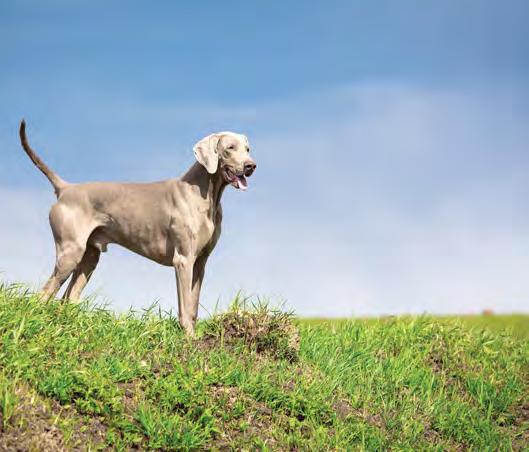

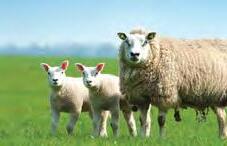

supervisor or another instructor will walk behind them and make sure the dog has enough of the basic fundamentals down so they can advance to the more complex training,” said Vincent.
As the dogs near completion of their training, GDB reaches out to applicants to match them with a dog. Clients are brought to the campus for a two-week training period with their assigned dog. The students stay on campus in dormitories and the GDB staff take care of their daily needs. Upon completion of their training, there is a graduation ceremony which has reopened, post-COVID, to the public.
Bendite Nancy Stevens, blind since birth, has a 3½-year-old guide dog, Winnipeg. “Winnie” is Stevens’ second GDB dog. “For me, my favorite thing about having a dog is being able to hike independently and not hold on to somebody,” said Stevens, who is also an active tandem biker and Nordic skier. Stevens made the U.S. National Cross Country Ski Team and participated in the 1998 Paralympics in Nagano, Japan.
“I do love to travel,” said Stevens. “Using my GPS and her, I can pretty much get around and feel more at ease when I’m walking with Winnipeg. I walk really fast and she is also a fast walker, too. I love that freedom of flying down the sidewalk.”
GDB breeds about 800 puppies a year. Roughly half will advance to guide dog status and the others might go through career changes and be placed with a service dog group or into a different GDB program.
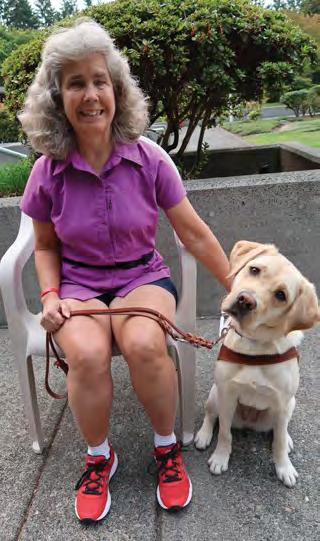
The organization relies solely on private donors as it doesn’t receive any government funding. GDB provides its services for free to their clients and cover the vast majority of costs associated with raising and training the puppies, veterinary care and travel and housing for their clients at their campuses. Puppy raisers and clients pay for dog food or receive support from their puppy club. Thousands of volunteers donate their time to assist staff with all aspects of the program, which has the simple goal of enriching a visually impaired person’s life through the eyes of a dog.
It truly takes a huge pack to raise a guide dog.

Flying can be stressful for many reasons.
To help promote a “pawsitive” experience and elicit some smiles from travelers and staff, certified therapy dogs from the Compassionate Canines of Central Oregon have been roaming the terminals at the Redmond Airport since May 2022.

Ateam of handlers and their happy dogs visit the airport as part of a visitor-enhancement strategy initiated by Erinn Shaw, Redmond Municipal Airport office assistant.
“The more I’ve traveled, the more I’ve seen these programs at other airports,” said Shaw. Shaw contacted Heidi Huebner, who started a therapy dog program called PUP (Pets Unstressing Passengers) at the LAX airport in California, launched in 2013. The San Jose, California, airport was the first airport to have a therapy dog program starting shortly after 9/11. “I contacted Heidi and she gave me their program information which we modified to fit our airport,” said Shaw.
To start the program, Shaw also reached out to CCoCO who were more than excited.
“This was her idea and she has made it work!” said Sue
Dolezal, Alliance of Therapy Dogs steering committee member and CCoCO volunteer. “The Airport personnel are the best I have ever worked with. Erinn and the rest of the staff are outstanding to work with and their care and concern for our dogs is outstanding,” said Dolezal.
All the dogs and handlers are certified and insured through the Alliance of Therapy Dogs or the Pet Partners organization. “Compassionate Canines of Central Oregon is an informal group that screens many of the facilities the therapy dogs visit in Central Oregon,” said Dolezal. “We help new therapy dog teams to find a place to ‘work’ and get started.”
Once they’ve passed their airport trial, the dogs have an airport ID affixed to their vest, which has “Therapy Dog, Pet Me” stitched onto the side. Some travelers are unsure at first if the dogs are service animals in

training and won’t approach. Once the handlers explain it’s OK to pet the dogs, it’s mostly tail-wagging time and head scratches.
Dolezal’s standard poodle, Gunner, was the first dog to sign up for airport duty. “When Gunner gets to the airport, he’s like a 6-yearold kid going to Disneyland. It’s his happy place for sure,” Dolezal said.

Research has shown that the simple action of petting a dog lowers the stress hormone cortisol in humans and increases levels of the feel-good hormone oxytocin, as well as lowering blood pressure. And the dogs enjoy the pets, too.
compassionate-canines.org
“The program has been very well received,” echoed Shaw and Dolezal. There are 13 dogs of all sizes and breeds in the program. Besides the dogs getting attention, the handlers chat with travelers about their pets, traveling destinations and Central Oregon in general.
“We don’t have dogs on set dates just yet; it’s mostly one or two days a week,” said Shaw. The volunteer canine groups also visit the 911 call center, St. Charles facilities, public libraries, colleges and assisted living facilities in the region where they spread their “pawsitive” vibe and do doggone good work in Central Oregon.
“When Gunner gets to the airport, he’s like a 6-year-old kid going to Disneyland. It’s his happy place for sure.”
—Sue DolezalPhotos by Erinn Shaw



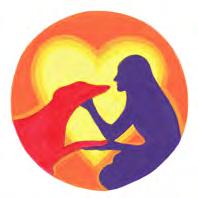




 By Nicole Vulcan
By Nicole Vulcan
In 2018, Jonathan and Jennifer Elwing launched a general handyman operation in Sisters. But five years on, what started out as a catch-all business aimed at helping people build decks and fix fences has morphed into a full-on cat-centric operation. The Elwings, under the name Elwing Works, now specialize in building catios – those outdoor enclosures that allow cats to enjoy the outdoors while remaining out of reach of predators (or becoming predators themselves). Cats’ castles, indeed.
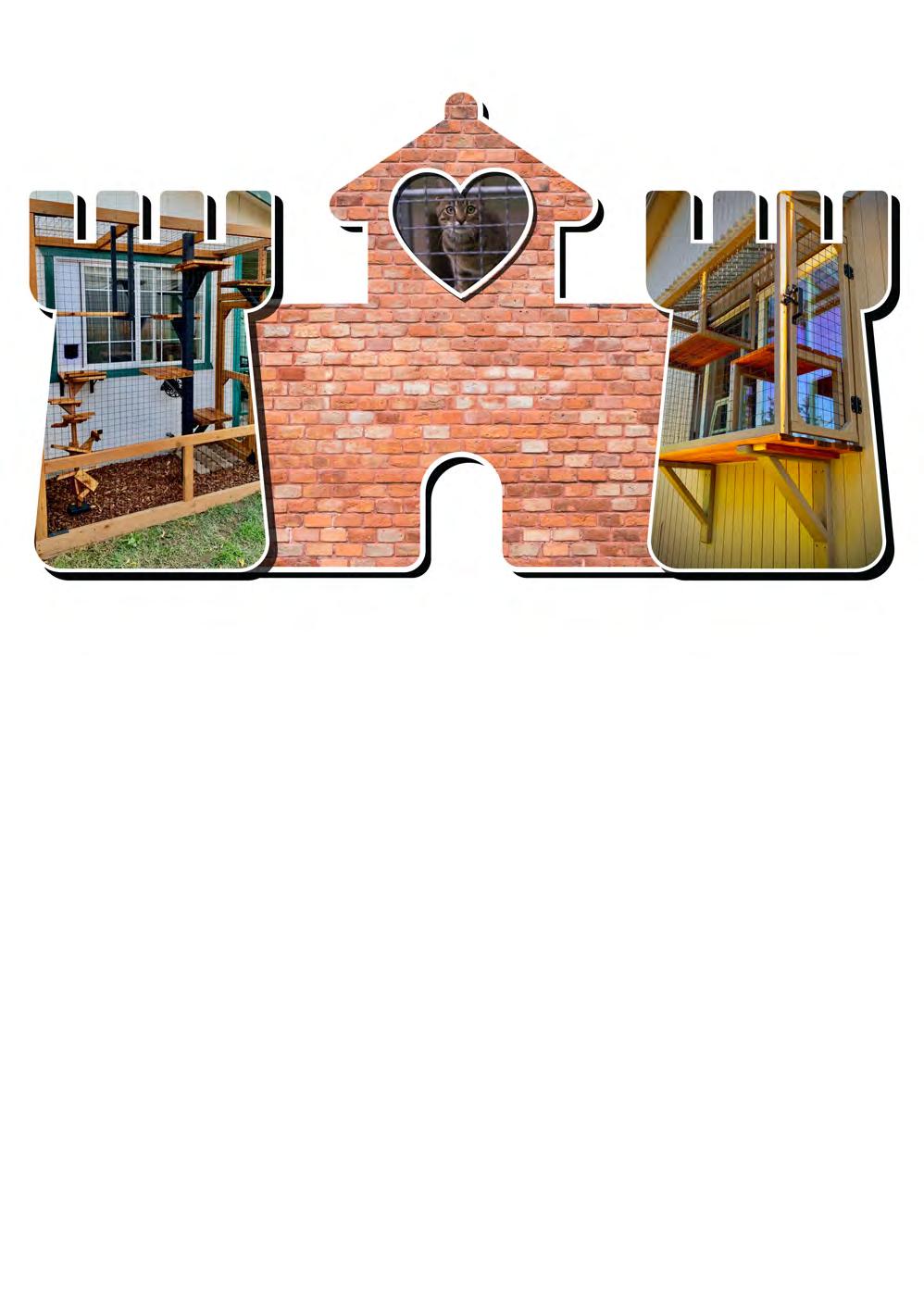
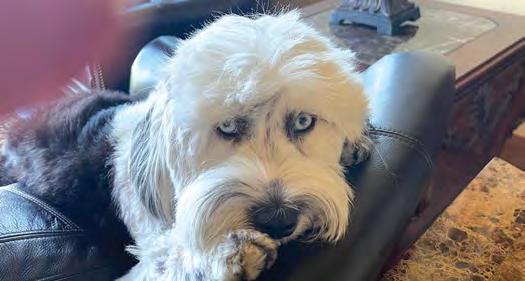



“There’s coyote sightings all the time in neighborhoods in town – so the first and foremost reason [to have a catio] is predators. And it’s not just coyotes and cougars, it’s also the birds of prey – sadly, we’ve heard stories of cats that have been taken by them, and also small dogs,” Jennifer Elwing told Central Oregon Pets. “And of course, birds. It protects birds from cats. So it’s for all of the animals, really.”

Each catio is custom-built to the specifications of the family. Some catios are simple affairs that enclose the space just outside a window; others are elaborate setups complete with spiral staircases, perches, hiding spots and even “skywalk” tunnels built above hot tubs or decks. Cats seem to love the space to roam, the Elwings said.
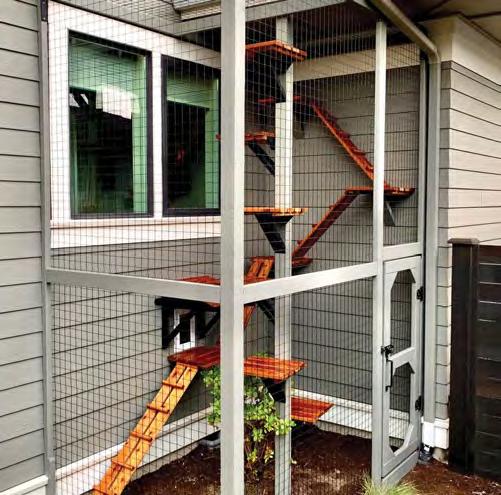

“It’s awesome when you can let them outside,” Jennifer Elwing said. “Even if it’s just a small window box.”
“We also like to remind people that this is doing your neighbors a favor, too,” Jonathan Elwing said. “You’re keeping your cats out of their flower beds; not everyone loves cats.”
The Elwings’ expertise in catios came from their own experience as self-described “crazy cat people.” Before they built catios for other people, the couple built what is perhaps the most elaborate catio setup around their own backyard. The couple had befriended four feral cats in their old neighborhood in the Willamette Valley, so when it came time to move to Sisters, the four wild cats came along. Wanting to give them a space to stretch out and still be free of the threat of predators, the Elwings created an outdoor enclosure that now extends to various parts of their yard. It includes numerous catios with perches, climbing trees, “wigwams” for cat hiding — made from pine tree boughs, and tunnels that connect the various catios. Once they started posting photos of their own setup, people began to reach out and ask for their own catio – kind of a dream gig for a pair of cat lovers.
“We love it,” Jennifer Elwing said. “It’s so much more fun to work with people with their animal projects!”










We’re
